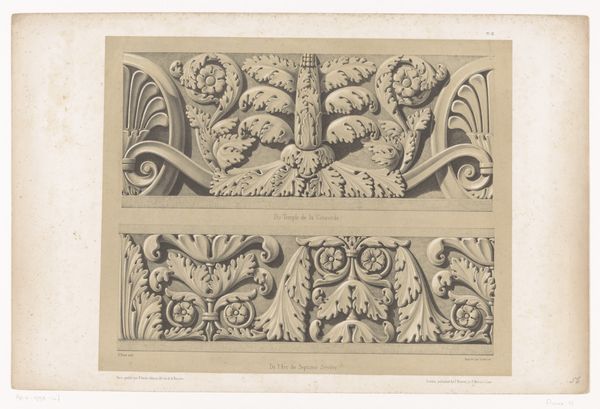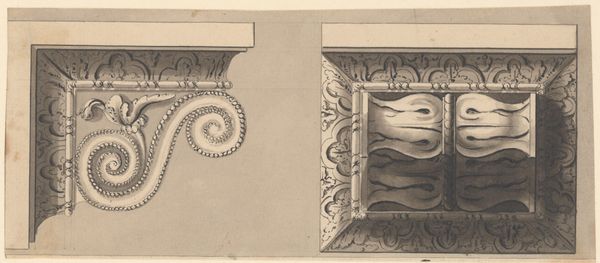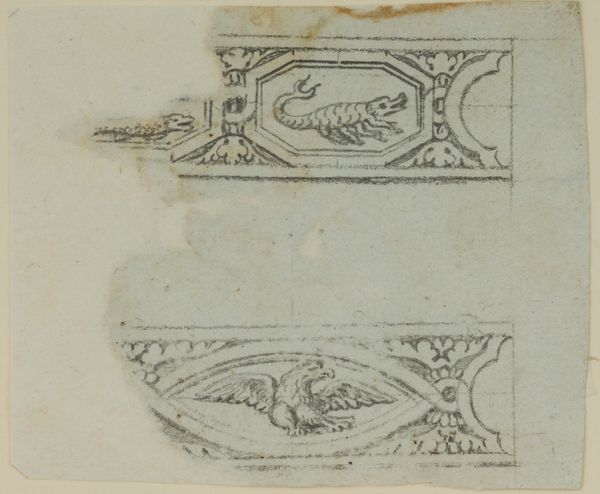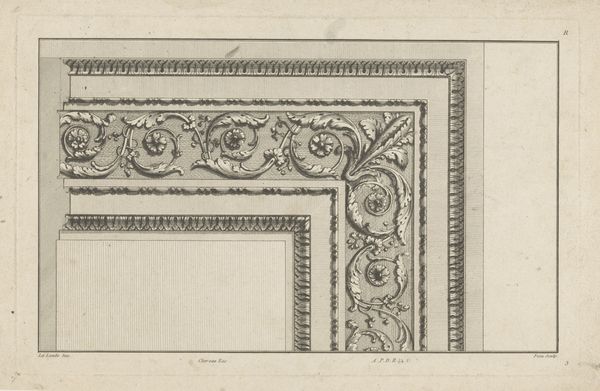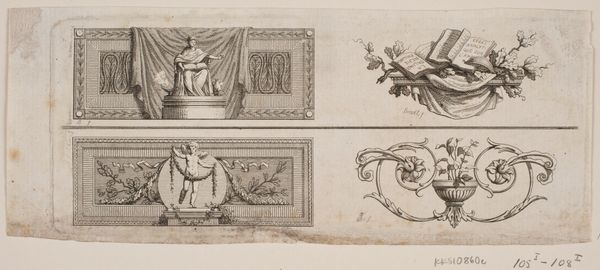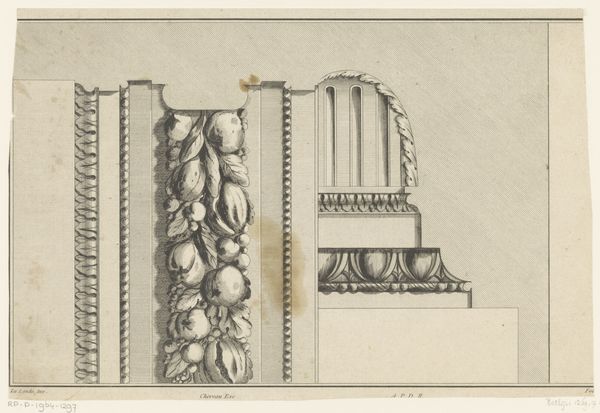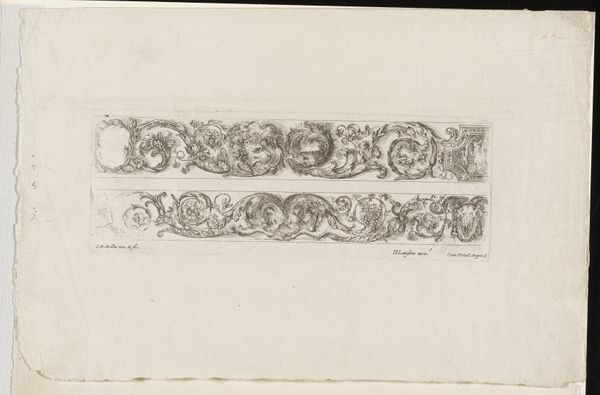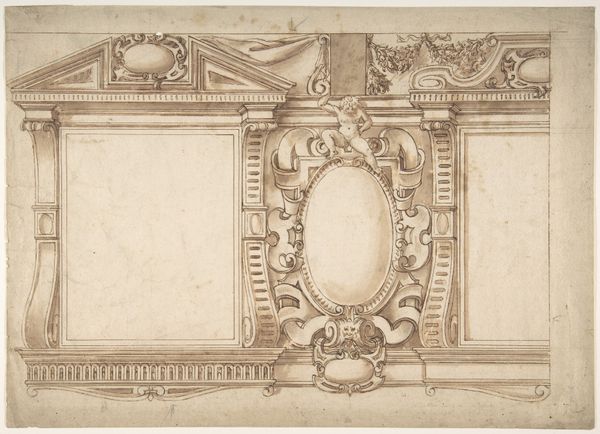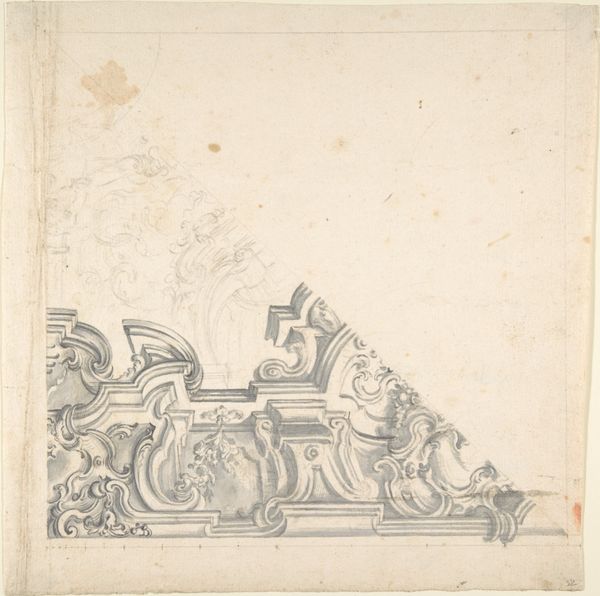
drawing, lithograph, print, paper, graphite, architecture
#
drawing
#
lithograph
# print
#
classical-realism
#
paper
#
geometric
#
graphite
#
history-painting
#
academic-art
#
architecture
Dimensions: height 317 mm, width 486 mm
Copyright: Rijks Museum: Open Domain
This print by Hubert Roux, depicts a section of the entablature of the Pantheon in Rome. It was made using a precise engraving technique, which renders every detail with clarity. Look closely and you'll see how the material of the Pantheon—stone, of course—has influenced the drawing's appearance. Roux has used subtle tonal gradations to convey the weight and texture of the marble. The repetitive motifs such as the acanthus leaves and egg-and-dart patterns, evoke the skilled labor involved in the carving of the original. The print itself, though, speaks to a different kind of work. Engraving demands an almost mechanical precision, a steady hand to translate three-dimensional forms into lines on a page. It is part of a long history of reproductive technologies, and while it is a world away from the physical demands of working with stone, the print bears witness to the Pantheon’s design. So, next time you look at the Pantheon, remember the layers of making involved, and the skilled hands that shaped its enduring form.
Comments
No comments
Be the first to comment and join the conversation on the ultimate creative platform.
